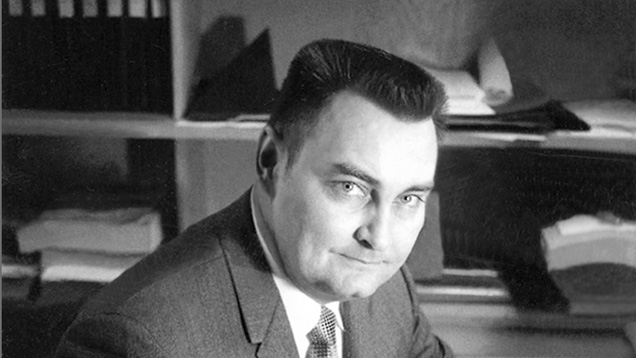Charles “Chuck” Fryer
(1928–2003)

Prior to his military service, which included a tour of duty in the Korean War, Fryer worked as glazier, a tradesperson who cuts and installs glass in window frames. Using GI Bill benefits, he enrolled in GIA correspondence courses while continuing to work in construction, finally earning both his GG and FGA diplomas in 1963. A charter member and president of the San Diego Gemological Society, he joined the Institute in 1966 as an instructor, a position he held briefly before he became supervisor of the Gem Trade Laboratory in 1967. In 1987, he was named director of gem identification services, a position he held until his retirement in 1993.
GIA’s lab services thrived under Fryer, whose research led to his reputation as one of the world’s premier gemologists. Using X-ray diffraction, he identified very rare minerals such as pink benitoite, the second known painite crystal, and the first cut jeremejevite. He also identified the mineral components of maw-sit-sit, a jade-like gem material. Whereas previous X-ray diffraction tests required grinding samples into powder, Fryer developed a scraping technique that was virtually undetectable but could still analyze surface-reaching inclusions. Outside his duties at GIA, he was frequently called upon as an expert witness in legal cases pertaining to gem identification.
Fryer’s articles on gem identification appeared in Gems & Gemology, Journal of Gemology, and Jewelers’ Circular-Keystone. Of particular note was his Fall 1986 G&G study on the separation of natural and synthetic amethyst. Fryer further contributed to G&G as editor of the Lab Notes section from 1981 to 1997; he continued to serve on the journal’s editorial review board until his death in 2003. His influential lab findings advanced GIA’s standing as the world’s authority on gemstone identification.
.jpg)


